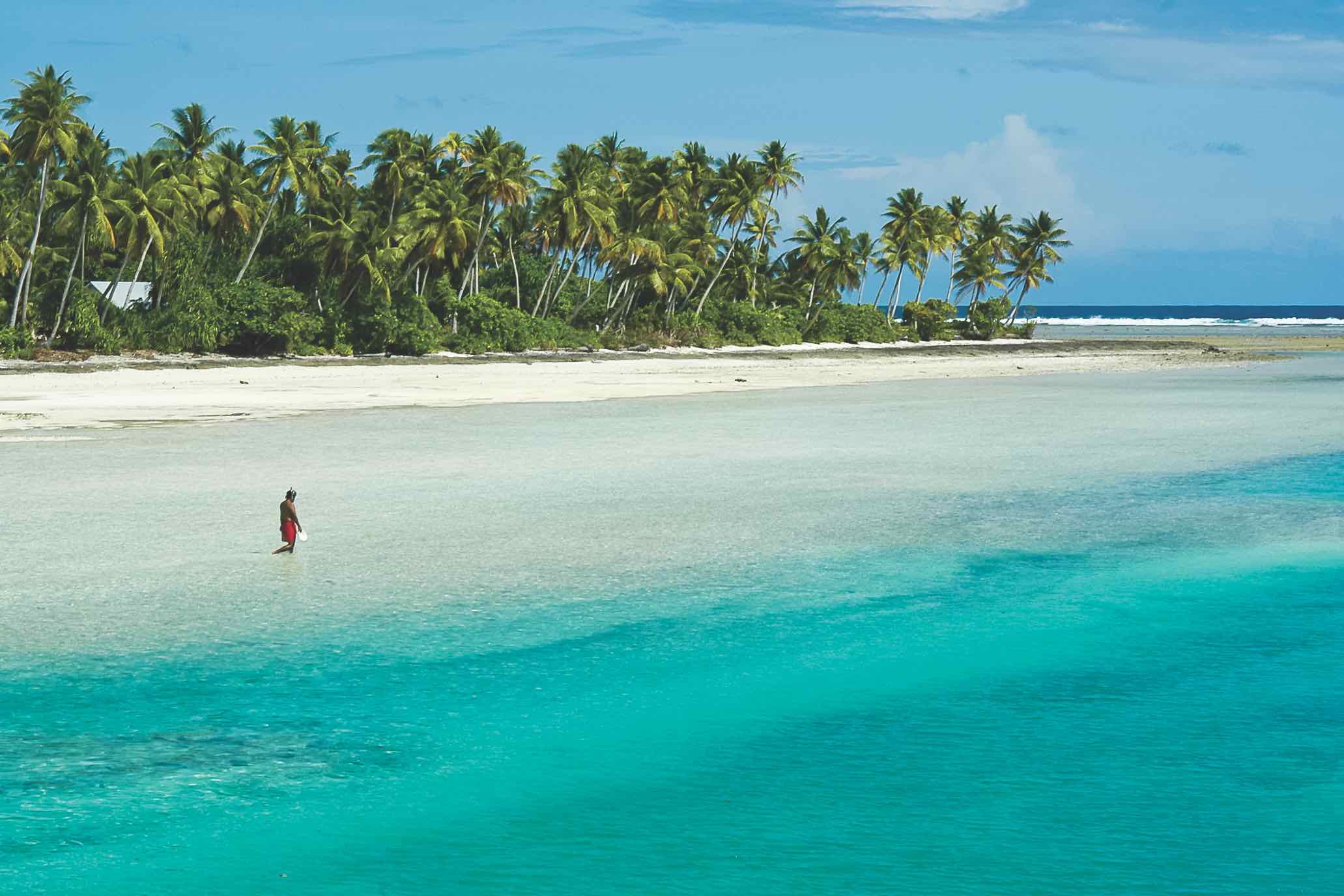Kiribati
Destination Kiribati
From the air, Kiribati is simply stunning. On the ground, friendly people, a strong culture and pristine water awaits you, Vanessa Nuttall takes a look.
January 24, 2019
Rebecca Murphy
January 24, 2019The island nation of Kiribati, comprising 33 atolls straddles the equator stretching 3235 kilometres across the Pacific Ocean. With traditions and culture thriving and visitors regarded as a curiosity, it is the Pacific of yesteryear.
South Tarawa is the urban hub of the nation with a large concentration of the population crammed into rows of houses squeezed together.
Land is scarce here, the lagoon suffering under the weight of people, but this is where government and commercial activity is focused, where the hustle and bustle of Kiribati prevails.
Venture away from south Tarawa and you escape this commotion, finding the unspoilt tranquillity of north Tarawa. To visit only south Tarawa is to miss the gentler side of Kiribati, the Kiribati where time flows with the moon and tides.
Located on Abatao in north Tarawa, our family homestay accommodation is delightful. The road halts abruptly at a passageway between the ocean and lagoon. A prompting whistle and a motorised canoe emerges from across the water to ferry us to the other side.
During the new moon, the crossing is magical as phosphorescence lights a trail behind us, swirling round our feet in the water; a step in the wet sand stirs a shower of phosphorescent dust.
Our guesthouse looks over the lagoon. A raised floor, roof of pandanus leaves and a mattress. Woven palm shutters keep out the rain, the lagoon breeze provides natural air conditioning! Home for a while. Privacy is pretty much non-existent but it all adds to the Kiribati charm.
It is quite normal to wake up, see several pairs of eyes staring back from beyond our feet, hear a shy ‘Mauri’ and then children running away giggling! The bathroom is shared and the toilet has built-in entertainment as hermit crabs scurry around our feet.
Meals are local food: pancakes made with ‘toddy’ served with coconut syrup, fish, rice, breadfruit, pandanus and coconut. Sunset over the lagoon is spectacular with a ball of fire resting on the horizon, the sky blazing with shades of orange, red, pink, purple.
Serenity – apart from the lapping of the water on the lagoon edge and the distant crashing of waves on the ocean side. A receding evening tide brings fishermen into the lagoon, wading the shallows with a lamp, trailing a fishing net between them or slowly drifting in a canoe to catch the next meal. In the dark of the night, tiny lights shine out in the middle of the lagoon.
Beyond the homestay, the village and North Tarawa stretch out. Traditional houses cluster together, a school, a church and a small shop, little else.
Children line the street as we pass, quietly whispering or boldly shouting ‘I-Matang’ (foreigner) before running away. Others crowd round in friendly curiosity, following until we reach the edge of the village or they lose interest.
Beyond the village houses are sparsely spread along the track. I-Kiribati sit talking or carrying out daily chores; men climb trees for toddy; women sit weaving mats; children play, patiently practising skills passed down to them. There is no need here for TV or fancy toys – the children seem content with what their imagination and natural environment provide. Calm and tranquillity reign.
© 2024 Pacific Island Living Magazine all Rights Reserved
Website by Power Marketing